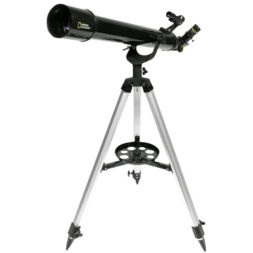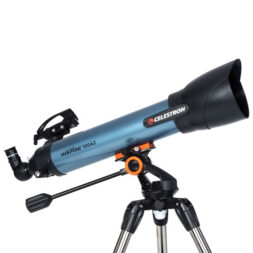
In the vast tapestry of the night sky, the moon holds a special place for skygazers. While a full moon is a spectacle even to the naked eye, viewing the moon through a telescope takes the experience to a whole new level. Whether you’re a seasoned sky watcher or a budding astronomer, understanding the nuances of moon telescopes can transform your lunar observations.
Do you need a telescope to observe the moon?
The short answer is: no. The moon is a captivating sight that can be appreciated with the naked eye. However, using a telescope can take your lunar experience to a whole new level of wonder. Telescopes provide a closer look at the moon’s intricate details that might otherwise go unnoticed. As you focus the telescope, you’ll notice the moon’s surface come to life. From the distinctive Maria, or “seas”, to the highlands and craters, the detail is mesmerizing. A telescope adds a layer of exploration and transforms a familiar sight into an awe-inspiring adventure.
Which telescope is best for looking at the moon?

While there isn’t a single best telescope for gazing at the moon, some features make certain models more suited for lunar viewing. These telescopes often come with specific filters and higher magnification abilities that allow you to explore the moon in great detail.
Moon telescope features to look for
- Aperture size: Larger apertures collect more light, allowing for clearer images.
- Magnification: A higher magnification will let you zoom into specific areas of the moon.
- Filters: Some telescopes come with lunar filters that reduce glare and enhance contrast.
The allure of the next full moon
For any moon enthusiast, the full moon is a particularly exciting time. As the moon reaches its fullest phase, its radiant glow casts a spellbinding ambiance, making it an ideal time to observe its captivating features. The increased brightness also makes for an optimal viewing experience. Bring your moon telescope and witness the play of light and shadow on the lunar surface from the comfort of your backyard or a quiet spot.
How to tell if it is a full moon?
Determining if it is a full moon requires nothing more than a glance at the sky. A full moon is characterized by its unmistakable round shape, resembling a luminous disk suspended in the darkness. The whole side of the moon facing the Earth is lit up by the Sun’s rays, causing it to appear fully “lit up”. When the sun sets, the full moon can usually be seen ascending in the opposite direction.
If you’ve aligned your lunar observations with a full moon night, it’s the best time to bring out your telescope. Ensure it’s calibrated and ready to go, as this is an event you won’t want to miss.
Tips for observing the full moon

To make the most of your lunar viewing experience, consider these helpful tips:
- Choose a location with minimal light pollution: The darker the environment, the clearer the view.
- Calibrate your telescope: Spend time fine-tuning the focus for optimal clarity.
- Experiment with filters: If your telescope comes with filters, use them to enrich the details.
- Take notes or photographs: Documenting your observations can be both fun and educational.
Get ready for the next full moon
Whether you’re planning to invest in a new telescope or you’ve had one for years, the moon offers endless possibilities for exploration. From identifying its various features to simply basking in its glow during a full moon, a telescope can make these experiences even more rewarding. So, as you await the next full moon, prepare your telescope and get ready for an extraordinary celestial journey!
This article was drafted using AI technology and then reviewed, fact-checked, and revised by a member of our editorial team.




